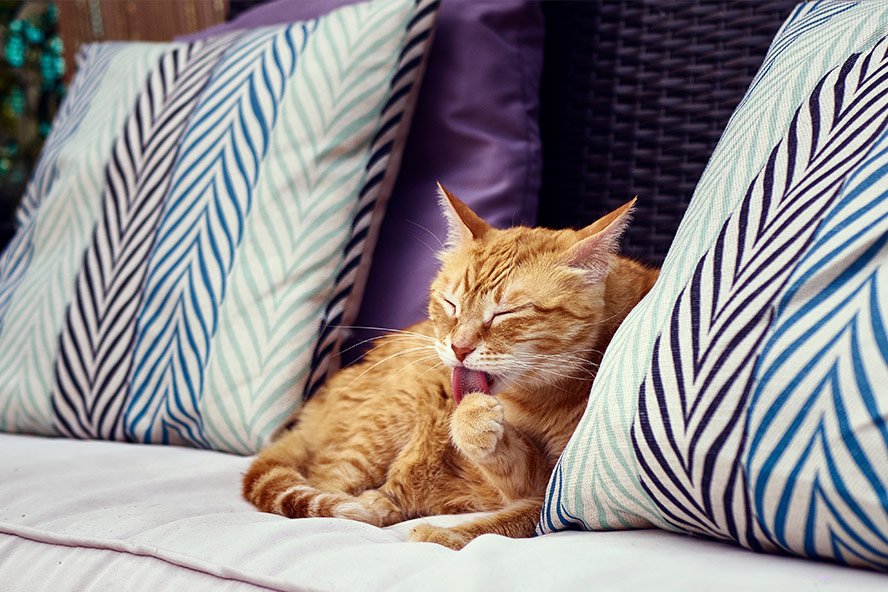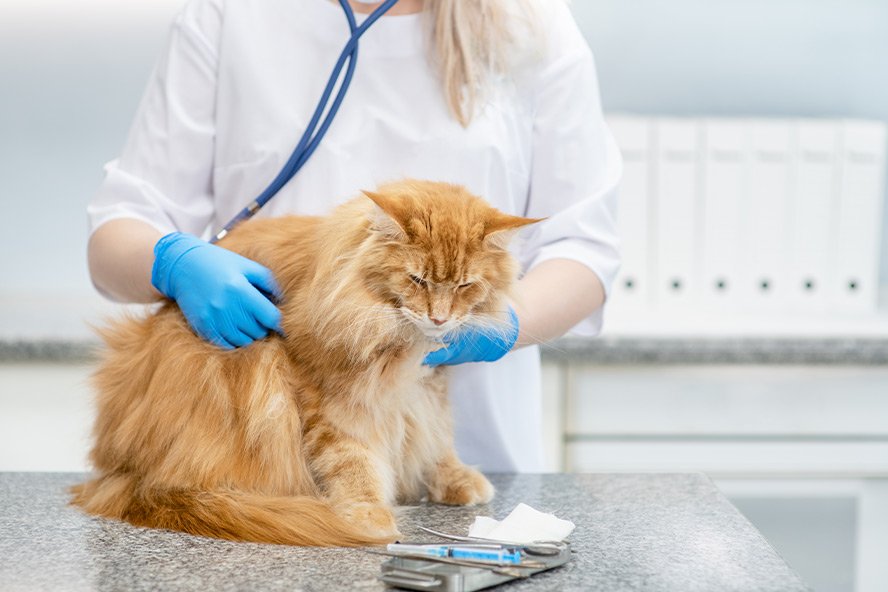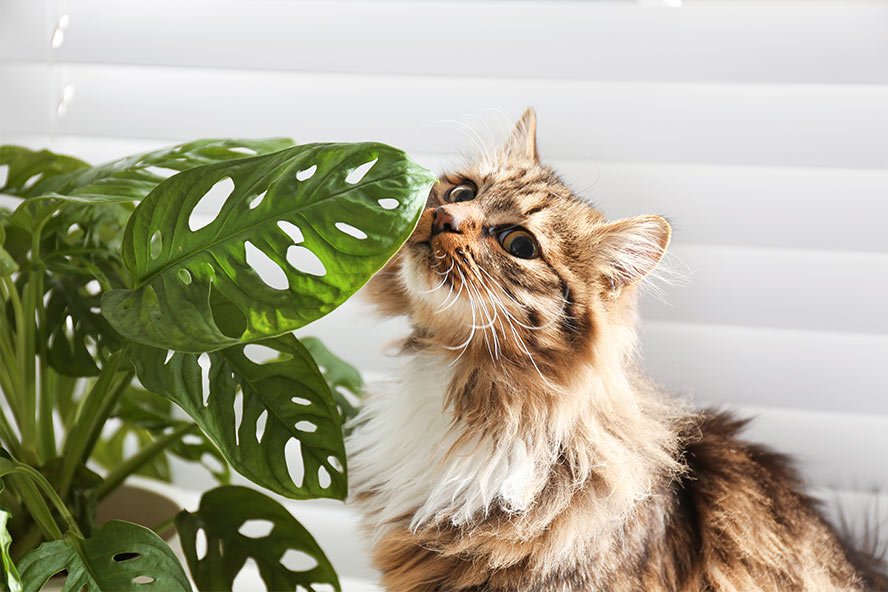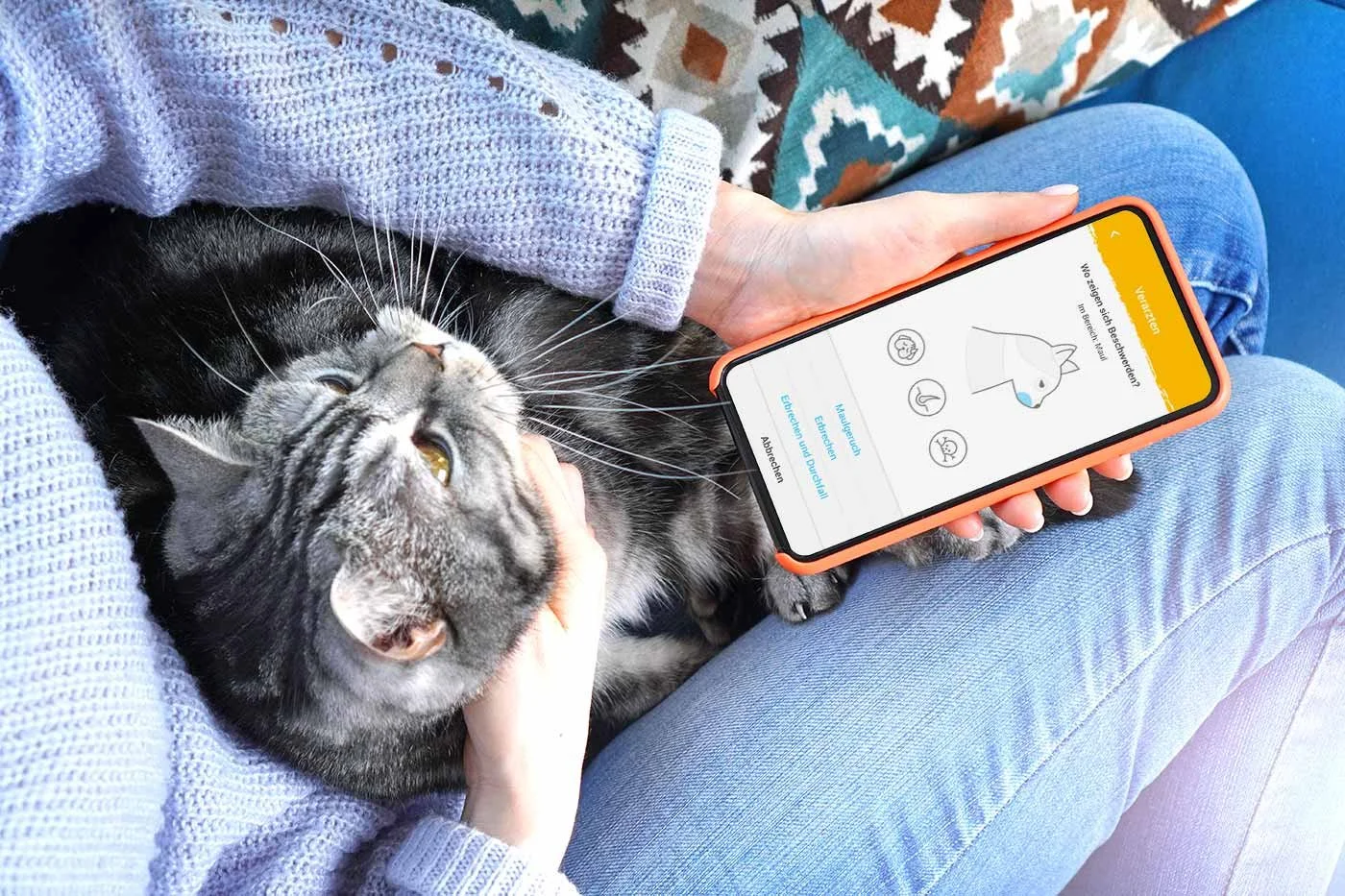cover: OlhaTsiplyar | Shutterstock
Cat vomits white foam. The cat has vomited foam on the carpet again... Is that serious? Why does the cat do that? What does the foam mean? Questions upon questions.
Vomiting can be very unpleasant for our house pets, but also for our interior. The causes are various and not always harmless. We explain how you can detect them and what you should do.
Cat vomits white foam - harmless or serious illness?
There are many reasons that cause vomiting. In most cases it is due to an inflammation of the stomach mucosa, i.e. gastritis. This can be triggered by various things. The causes range from licked-up hair to kidney disease to poisoning.
Why is there white foam? This is simply a sign that the cat has had an "empty" stomach. The gastric acid and swallowed saliva are foamed up by being regurgitated. Sometimes there may even be some bile. Then the colour can also be yellowish or slightly greenish.
esp2k | Shutterstock
Harmless reasons for vomiting white foam
Our velvet paws are very sensitive. Simply ingesting hair through grooming can irritate the mucous membrane. These hairs are then often found in larger numbers in the vomit. Malt paste can help to excrete the hair better.
Food intolerance can also cause vomiting. Usually cats also suffer from diarrhoea and licking and scratching due to itching. To find out, the cat must be put on an elimination diet. In this diet, the food may only consist of a few consistent ingredients for weeks and additional treats are taboo.
Gastritis in cats can also develop from stress alone, just like in humans. However, this is difficult to prove and rather a diagnosis of exclusion. In this case, the stress trigger must be found and eliminated so that the cat can relax again. Unfortunately, the exact causes of stress are as varied as our pets themselves.
Ermolaev Alexander | Shutterstock
Serious diseases as a potential cause
Sadly, there are also serious diseases that can lie behind vomiting. Usually the cat is then generally unwell and other symptoms appear.
The following causes can be responsible for white foam vomiting:
foreign body
intestinal parasites
bacterial or viral infection
renal failure
pancreatitis
hyperthyroidism
poisoning
tumour
More details about the conditions
The possible diseases that cause vomiting are very diverse. Here you can find more information and treatment options.
Maria Moroz | Shutterstock
Foreign bodies
Cats love to play with hair ties or twine. But if they swallow them, things get serious. The foreign bodies can cause life-threatening intestinal obstruction. Especially the small intestine is very narrow and the objects can get stuck.
Better safe than sorry! Don't leave potential foreign objects unattended in the home – you never know what your cat will do with them.
Treatment for foreign body ingestion: Depending on the size, the body may be able to eliminate the foreign body on its own. However, if symptoms already show, surgical removal is usually necessary. In the case of an intestinal obstruction, faeces will no longer be passed and vomiting will occur. The intestine may start to become necrotic at the site of the obstruction.
X-ray or ultrasound examinations are used to determine where the foreign body is located.
Intestinal parasites
The most common are worms and giardia. They cause gastrointestinal inflammation. Symptoms are rather rare, but vomiting, diarrhoea and weight loss may occur. They are transmitted from cat to cat or via fleas. They can also be ingested when hunting mice or via raw meat.
Treatment for intestinal parasites: For each parasite there are special antiparasitics, i.e. effective medicines. In the case of giardia, it is also important to thoroughly disinfect the litter box and the environment to avoid re-infection.
Bacterial or viral infection
Bacterial infections often occur through feeding raw meat (BARF) or spoiled food. The most known of these are salmonellae. Viruses are usually transmitted from animal to animal via droplet infections. Typical pathogens are rota, corona or parvoviruses. All of these pathogens cause gastrointestinal inflammation with diarrhoea and vomiting, which can be mild or severe.
Treatment for bacterial and viral infections: Bacterial intestinal diseases are treated with antibiotics if the symptoms are severe. In the case of viral diseases, only symptomatic therapy helps. The main aim is to compensate for the loss of fluids. Antibiotics are not effective against viruses and are used at most to prevent an additional bacterial infection.
Renal failure
Unfortunately, many older cats are affected, the exact cause is unknown. In chronic kidney disease (CKD), the structure of the kidneys changes permanently. They can no longer perform their function as a filter organ adequately. Therefore, more substances remain in the blood that should actually be excreted. These cause, among other things, internal poisoning with nausea and gastritis.
Treatment for renal failure: There is no cure for CKD. However, the progression of the disease can be slowed down. Infusions, drinking plenty of fluids and food that removes the workload from the kidneys are the most effective ways to do this.
Pancreatitis
Many causes are discussed for the occurrence of pancreatitis. This organ seems to be very sensitive in cats. The inflammation of the organ causes severe abdominal pain, affected cats do not eat. Often there is simultaneous inflammation of the liver and bile ducts, called triaditis (from Latin tri- = three).
Treatment for pancreatitis: Rest, infusions, low-fat food and painkillers are the best treatment. The cat should start eating again as soon as possible, otherwise it will quickly become very weak.
Hyperthyroidism
If the thyroid gland produces too many hormones, the whole body is affected - the metabolism is constantly running at full speed. The cat loses weight, often seems more aggressive, suffers from diarrhoea and vomits a lot.
Treatment for hyperthyroidism: Lifelong medication can help. Rarely an operation is necessary if a malignant tumour is underlying.
poinonous Monstera plant, New Africa | Shutterstock
Poisoning
Many plants and medicines are poisonous for our velvet paws. Poisoning is often suspected on the basis of the anamnesis, as the symptoms can be very unspecific and varied.
Treatment in case of poisoning: The patient must be stabilised and the poison must be eliminated from the body as quickly as possible. Infusions and various medicines help here. For a few poisons there is also an antidote.
Tumour disease
Cats can also develop stomach tumours, but usually only at an older age. These irritate the mucosa and cause vomiting.
Treatment for tumour disease: Depending on the location and stage, the tumour can be surgically removed or irradiated. Chemotherapy is also possible for animals nowadays.
What do vets say about white foam vomiting?
Veterinarians recommend giving the cat a stomach-friendly diet for a few days if it vomits. You should also look into the cause of the vomiting. There are often clues to this. Rarely there is an emergency, in which case you should act immediately.
If you notice these emergency symptoms, you should go to a veterinary practice or clinic immediately:
sudden, insatiable vomiting
vomiting blood or faeces
neurological symptoms such as convulsions, tremors, disorientation
inability to stand up
respiratory distress (pumping breaths, open-mouth breathing)
If the following serious symptoms occur, it is sufficient to go to the regular vet’s office hours at the latest the next day:
repeated vomiting or diarrhoea within 24 hrs.
vomiting immediately after drinking
fever
weakness
abdominal pain
Chronic diseases often develop gradually. Sooner or later, other symptoms will become apparent. Have your cat examined by a veterinarian as soon as you notice any of the following changes:
shaggy and dull coat
weight loss
decrease in appetite
increased drinking, often indicated by increased urination
bad breath
At the vet's office, your cat can be helped appropriately and early on. Waiting is not a good option, as the progression of a chronic disease will continue relentlessly without treatment. Besides, the cat is usually suffering, even if it does not show it.
Varavin88 | Shutterstock
Frequently asked questions about vomiting foam in cats
Here you will find more important questions that are often asked in connection with vomiting foam in cats:
What if cats are foaming at the mouth?
When cats salivate more, foam can form in front of the mouth. This is usually harmless. It can be triggered by a bitter taste, for example when your cat has found a bug to play with. However, various medications such as metamizole or poisoning can also cause foaming at the mouth. So keep an eye out for clues as to the cause.
How often is it normal for cats to vomit?
Vomiting is never normal in cats. It is always a physical reaction to a stimulus. The causes are often not serious and there is rarely a serious illness behind it. Nevertheless, if your cat is vomiting, you should pay attention and get to the bottom of the cause. If it is due to licked-up hair or a food intolerance, for example, it is easy to find a remedy.
When do I have to go to the veterinary practice if the cat vomits?
Most vomiting is harmless and can be treated at home with simple measures.
However, if the cat vomits more than once in 24 hours, or if there are other symptoms, a vet should be consulted. If you are unsure whether you need to go to a vet's office, the confidu diagnosis finder developed by vets can help you. It gives you specific steps on how to help your cat – even after a vet visit.
What if the cat vomits white foam? Our conclusion
As vets, we recommend that you take vomiting in cats seriously. Often important warning signs and symptoms are overlooked. There are simple things you can do to help your cat live a happy life - because vomiting is not normal! There is always a reason, you just have to find it.
Keep a close eye on your cat. As the owner, you know your cat best and will quickly notice if something is different. And don't be afraid to ask for an expert opinion. Before you have to put your cat in a carrier and go to the vet, the confidu app can help you. The diagnosis finder gives you an assessment of the problem with clear steps on how to proceed.
The confidu magazine is written by our veterinarians according to current scientific standards. The articles do not replace a veterinary diagnosis, but are intended to provide you with initial information on many topics related to your animal. If you have specific questions about your pet, our vets will be happy to advise you via the confidu app.










